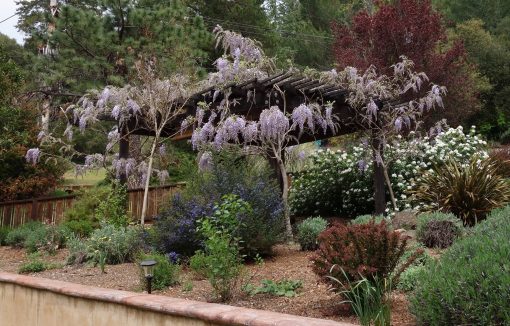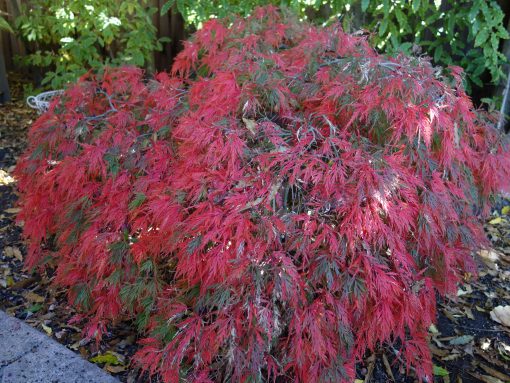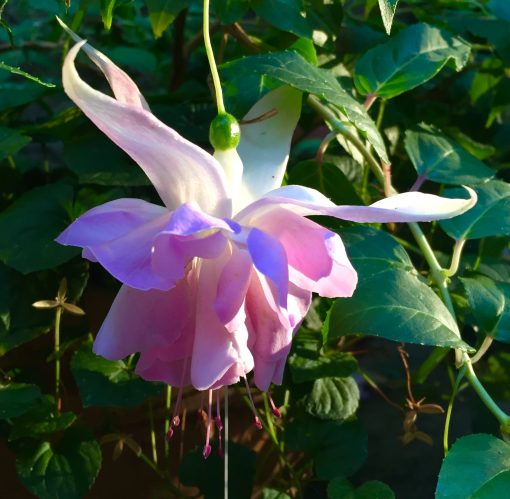
size in check.
Summer solstice, the official start of summer, sneaked up on me. The warmer weather has been here off and on for a couple of months so it’s not just the weather. It’s those darn pesky pests on my plants that are bugging me. You’d think me, of all people, would not let something get away from me but alas, I have a spider mite problem that is giving me nightmares. Don’t let this happen to you.
I’ll have to heed my own advice from now on. Stroll your garden regularly with a beverage of your choosing and just look at your plants. Are the leaves discolored or have holes? Yellow? Stippled? Dropping off? Limp? If so then go in for a closer look and identify the problem early.
I’m OK with a few holes here and there but a heavy infestation of pests should be trimmed off or sprayed with an organic insecticide .I inspect the tips of my fuchsias regularly for fuchsia mites and clip off any distorted growth. I hate to spray even organics on fuchsias due to the hummingbird activity. Lately I’ve seen rose slugs making lace out of the leaves so I crush by hand or spray with an organic.
Many plants, both vegetable and ornamental, are bothered by aphids and other sucking insects as well as foliage and flower eating bugs. From cucumber beetles, flea beetles, stink bugs, weevils, curculios to borers , the list of trouble makers is endless. To help deter them mix up some pepper spray in your kitchen.
1 tablespoon hot pepper sauce or 1 teaspoon cayenne pepper
6 cloves garlic, crushed
1 quart warm tap water
Let stand I hour, strain and spray plants either in the morning or evening.
When the last flowers of your rhododendron, azalea, camellia, weigela and spirea have finished it’s time to prune them. If you prune too many months after flowering your risk removing the flower buds forming for next year. Basically it’s best to prune lightly each year to shape plants that have become too leggy. The rules apply to most plants. Prune to the next whorl or set of leaves. To increase rhododendron bloom next year, break off any faded flower trusses just above the growth buds being careful not to damage the new buds.
Apply the second fertilizer application for the year to your citrus and fruit trees. The final one for the season should be immediately after harvest. Apply the fertilizer to the soil around the drip line of the tree where feeder roots are located and scratch into the surface. Water in well. As with all fertilizers, make sure the trees are moist before you fertilize. Young trees in their first, second or third growing season should receive half the rate of established trees.
Another garden to-do this month includes summer pruning of wisteria. To increase flowering next spring and keep these vines under control cut new growth back to within 6″ of the main branch. If you want to extend the height or length of the vine, select some of the new streamer-like stems and tie them to a support in the direction you wish to train the plant.
While I have the pruners out I’ll be shearing back early flowering perennials to encourage another round of blooms. The season has just started and you’ll be enjoying lots more flowers in the months to come if you deadhead regularly. Perennials and shrubs that benefit from trimming an inch or two below the spent blooms are erysimum, lavender and pink breath of heaven which will keep them compact.


